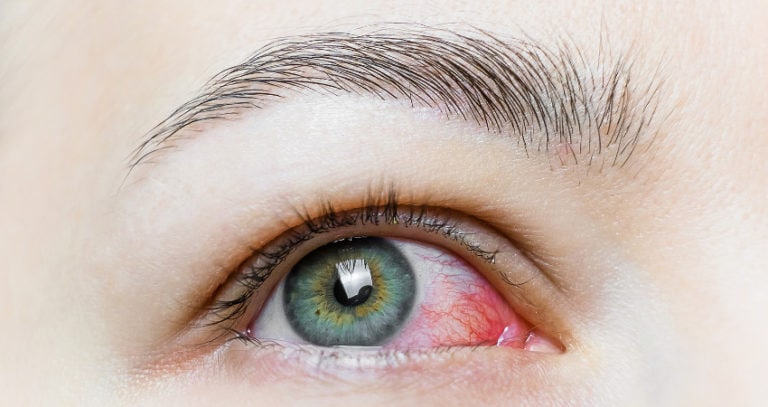According to experts with the American Academy of Ophthalmology, protecting your eyes is crucial to slow the spread of the new coronavirus. While it’s rare, a new study shows that coronavirus may cause pink eye in a small number of patients. Here’s what you need to know to limit your eye exposure, protect yourself, and help others.
How coronavirus can spread through the eyes
When someone with coronavirus coughs or talks, virus particles can spray into another person’s face. You’re most likely to inhale those droplets through your mouth or nose, but they can also enter through your eyes. In addition, you can become infected by touching something with the virus on it, such as a light switch or doorknob, and then touching your eyes.
Coronavirus and pink eye
Health officials believe viral pink eye, or conjunctivitis, develops in about 1 to 3 percent of people with coronavirus. Symptoms of pink eye include redness, swelling, or discharge in one or both eyes. It is not common to develop pink eye from coronavirus. But, if you have any of these symptoms along with a fever and cough, if you’ve recently traveled from an area with a known outbreak, or if you’ve been in contact with someone who has a confirmed case, call your doctor.
Viral pink eye vs. spring allergies
Note that during our spring allergy season, pink eye can often be confused for normal allergies. If you have itchy or burning eyes only with no fever or cough, you’re likely suffering from allergies caused by pollen in the air. Viral pink eye usually doesn’t cause itching. Allergy sufferers are also likely to have other classic signs of allergies, like sneezing or a runny nose.
Tips to protect your eyes during the COVID-19 pandemic
The American Academy of Ophthalmology recommends these tips to limit your eye exposure to coronavirus:
- Contact lens wearers may want to switch to glasses to avoid touching their eyes more than the average person.
- Wearing glasses, including sunglasses, can shield your eyes from other people’s respiratory droplets, though they don’t provide 100% security.
- Stock up on eye medicine prescriptions if you can. Ask your insurer to approve a 3-month supply of essential eye medicine, like glaucoma drops.
- Avoid rubbing your eyes to lower your risk of infection.
- Practice safe hygiene and social distancing.
If you do develop viral pink eye, you can usually self-treat at home. Stop wearing your contacts, and use a new pair when you’re better—your old contacts may re-infect you if you wear them again. Stop wearing eye makeup and get new makeup when your eyes are healthy. Also try over-the-counter painkillers, lubricating eye drops, and a warm, damp washcloth over the eyes to reduce pain.
Make sure you don’t use red-reducing eye drops like Visine, as these may make symptoms worse. And, be careful not to spread the infection from one eye to the other. Change your pillowcases and sheets every day, use a fresh towel every day, and wash your hands often, especially after touching your eyes.
When to call your ophthalmologist
You should call your ophthalmologist right away if your symptoms have continued for a week or more, or are getting worse. Also call your doctor if your eye is producing a lot of pus or mucus, you’re having trouble seeing, you become sensitive to light, or if you have any other symptoms of an infection—like fever or cough.
For everyone’s health and safety, ophthalmologists and other doctors are being urged to limit contact with patients during the coronavirus pandemic except for urgent or emergency care. Depending on your symptoms, your eye care specialists may recommend a telemedicine visit.

